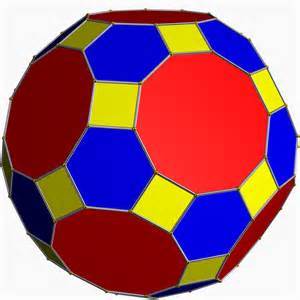62 Colors
This is the Great Rhombicosidodecahedron (one of the Archimedean Solids):

In this picture it is colored using different colors.
However, suppose you have different colors, and you wish to paint each of its faces in a different color.
Let be the ratio of the number of unique ways to paint this solid divided by the total number of ways this solid can be painted, where and are coprime positive integers.
What is ?
Note : Unique implies that for two coloring combinations and , you can't pick up and reorient it to make it look exactly like .
Image credit: commons.wikimedia.org
The answer is 61.
This section requires Javascript.
You are seeing this because something didn't load right. We suggest you, (a) try
refreshing the page, (b) enabling javascript if it is disabled on your browser and,
finally, (c)
loading the
non-javascript version of this page
. We're sorry about the hassle.
The divisor of this ratio is equivalent to saying "How many different ways can you orient this solid and have it look the same?", or the redundancy of taking all the combinations of coloring the solid vs all of the different ways ("different" as defined in the problem).
To orient this solid, lets choose one of the regular decagons (red in the picture) as a base. There are 1 2 of them, so you have 1 2 choices. For each choice, there are 5 possible rotations each with yield an equivalent view of the solid.
Therefore there are 1 2 × 5 = 6 0 equivalent ways to orient this solid.
So, b a = 6 0 1
1 + 6 0 = 6 1